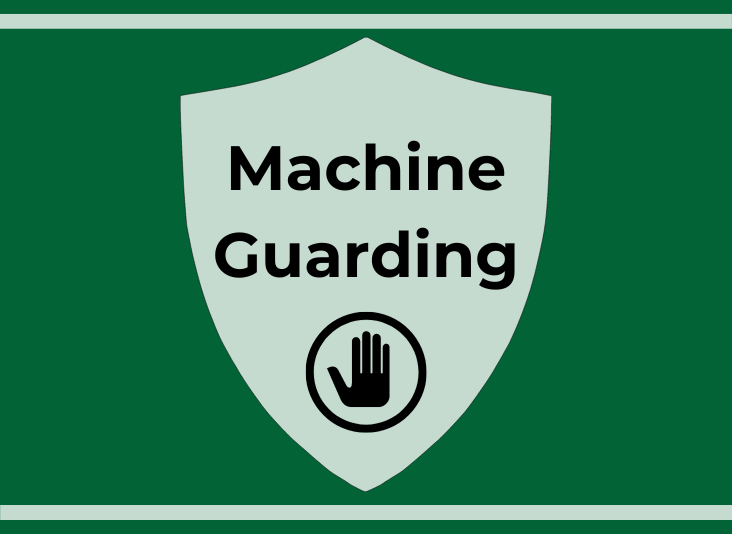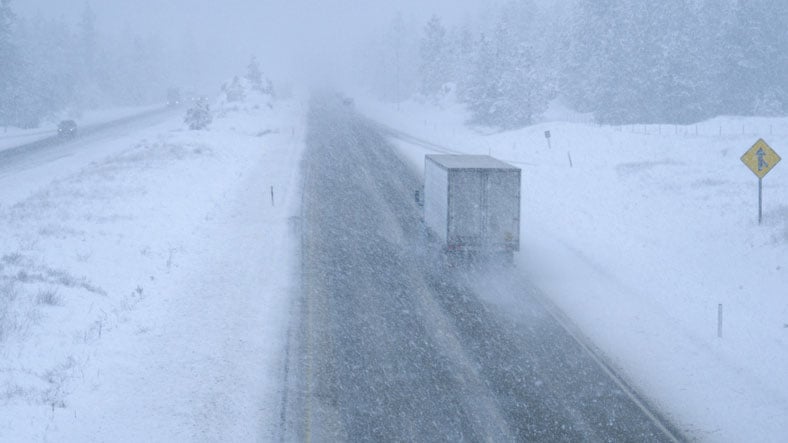Stay On Guard for Machine Guarding Safety
The tenth and final installation of our blog series analyzing OSHA’s top 10 most frequently cited standards discusses machine guarding safety requirements.
Workplace machinery poses a massive hazard to worker health and safety—yet managers and employees alike often overlook these risks, assuming they are “just part of the job.”
These hazards shouldn’t be accepted as routine—and fortunately, they don’t have to be. “Machine guarding” is an effective way to protect employees from these risks. Simply put, machine guarding is when one or more guards or safeguards are put in place on machinery to protect employees from moving machinery hazards, such as:
- Rotating parts
- Material chipping
- Sparks and heat
- Any other hazard present around the machine
These guards are essential for safety, as any powered or moving machine can put workers in jeopardy. In fact, these dangers are so prevalent that the Occupational Safety and Health Administration (OSHA) regulate them with its “Machine Guarding” safety standard (29 CFR 1910.212). Buttressing these federal machine guarding safety guidelines are numerous local and state regulations, such California’s Title 8 CCR §4184 and §4207, for example.
Machine Guarding Not Often Prioritized
Unfortunately, Machine Guarding ranked in the top ten of OSHA’s most violated safety standards for 2022—and based on early 2023 data, it will likely keep its place. This underscores both the importance—and general absence—of moving machinery safeguards within the workplace.
Yet, avoiding Machine Guarding guidelines can spell disaster for an organization. Beyond the obvious concerns to worker health and wellbeing, which we will discuss below, OSHA fines for noncompliance can amount to $15,625 per violation, per day—impacting your bottom line.
Workplace Machines—Beneficial But Risky
Machinery is crucial for any industry. From coffee machines to large industrial computer numerically controlled (CNC) machines, robotic assembly machines, power tools and more, machinery helps us do our jobs. In fact, researchers estimate that almost half of all jobs will be automated in the future.
Common workplace machines include, among others:
- Power tools, both portable and non-portable
- Revolving drums or barrels (lathes)
- Milling machines
- Joiners
- Power presses
- Shears
- Conveyor belts
- Robotic arms
The hazards of this moving machinery are widespread and will vary based on the type of equipment and its usage. Hazardous mechanical motions and actions can include:
- Rotating (including in-running nip points)
- Reciprocating
- Transverse motion
- Cutting
- Punching
- Shearing
- Bending
These motions and actions can:
- Crush people between two pieces
- Strike personnel, resulting in blunt force trauma
- Slice, cut, stab, or puncture workers who get too close to sharp edges or pieces
- Trap and pull in personnel who touch moving parts
- Shear extremities if pieces are moving past one another
- Burn or scald workers who get too close to hot or cold steam
- Electrocute and shock personnel who get too close to electrical pieces
As you can imagine, if any of the above hazards were to occur, the results could be catastrophic. The risks grow exponentially in any organization that fails to maintain machinery in proper working order or in facilities where there is substandard training for workers who use or interact with machines. It should be noted, though, that training is not a replacement for machine guarding, but instead another tool to be used in conjunction with machine guarding and other relevant safety devices.
Enter: Machine Guarding
Fortunately, machine guarding procedures and tools help mitigate these risks. OSHA has strict guidelines for how these guards should be enacted and utilized. Types of guards and safety devices include:
- Fixed machine guards, the “first point-of-operation safeguard” that prevents hands and arms from entering the “danger zone” of machines.
- Interlocked machine guards, devices that provide an interlock to disable the machine if the guards are removed.
- Self-adjusting guards, protectors that will automatically adjust any machine opening that receives a stock feed. As the stock enters the danger area, the guards open only wide enough to permit its passage. Once the stock passes through, the guards resume their original position.
- Two-hand tripping devices, which require the machine operator to control the machine from a safe distance, and force the worker to keep two hands on the controls at all times.
- Presence-sensing devices like light barriers or curtains, which, when breached or triggered, automatically shut down the machinery.
Three Pillars of Machine Guarding Success
There are three main guidelines for appropriate machine guarding:
- Guards should be placed on the machine directly. (“Guards should be affixed to the machine where possible and secured elsewhere if for any reason attachment to the machine is not possible.” (29 CFR 1910.212(a)(2)))
- Guards must shield workers from the point of operation, the area on a machine where work is actually performed. It is here where the employee is exposed to injury—and so guards should be designed to prevent the need for any body parts to enter the danger zone during machine operations. To supplement guards, hand tools should be provided to adjust materials or machines.
- Machines used in a fixed location should be securely fastened.
Following these guidelines will help ensure:
- Moving machines safety
- Workforce protection
- You avoid violation citations
Partnering for Machine Guarding Compliance Success
Ensuring each machine is guarded properly during each use can be an immense challenge. Operational safety requires:
- Training on proper protocols for all employees
- Complete job hazard assessments for positions that will be utilizing the machines
- The evaluation of all machines to determine which need guarding
- Installation and maintenance of guards
These tasks can eat up resources and time—especially when managers are unsure of the exact details of the regulations they must implement.
Triumvirate Environmental can ease this burden and keep you in compliance with OSHA’s Machine Guarding safety standard, 29 CFR 1910.212, or any additional local or state regulations. Our knowledgeable team of consultants is ready to help ensure you stay fully compliant—and your team stays safe. Contact us today to learn more.






